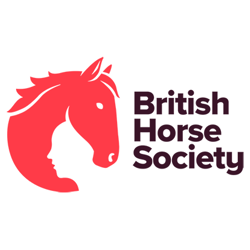Stage 3 Care
| Learning outcome | Assessment criteria | Guidance on the content to be learnt during training and sampled during assessment | Assessment method |
|---|---|---|---|
| 1. Understand the roles, rights and responsibilities of a Groom | 1.1 Explain the roles of a Groom |
Roles to include;
|
Discussion |
| 1.2 Explain the responsibilities of a Groom |
Responsibilities to include;
|
Discussion | |
| 1.3 Explain a range of current legislation applicable to stable yards |
Range = 2 or more Current legislation to include;
|
Discussion | |
| 1.4 Explain employment rights |
The rights of the employee, to include:
|
Discussion | |
| 2. Be able to use equipment for flatwork and jumping | 2.1 Fit tack for flatwork |
Tack to include; Double bridle
|
Observation |
| 2.2 Evaluate the fit of the flatwork tack |
Fit, to include;
|
Observation and Discussion | |
| 2.3 Put on schooling bandages for flatwork |
Schooling bandages;
|
Observation | |
| 2.4 Fit tack and boots for jumping |
Tack and boots to include;
|
Observation | |
| 2.5 Evaluate the fit of the jumping tack |
Fit to include;
|
Observation and Discussion | |
| 2.6 Explain a range of factors affecting saddle fit |
Range = 3 or more Factors;
|
Discussion | |
| 3. Be able to use studs | 3.1 Demonstrate how to put a stud into a shoe |
Demonstration to include;
|
Observation and discussion |
| 4. Understand the use of bits | 4.1 Explain the use of a range of bits |
Range = 2 or more Bits to include;
|
Observation and discussion |
| 5. Understand the nutritional requirements of a horse | 5.1 Explain the role of nutrients in a horse’s diet |
Nutrients to include;
|
Discussion |
| 5.2 Explain a range of forages available for feeding horses |
Range = 4 or more Forages;
|
Discussion | |
| 5.3 Explain a range of factors that may influence a horse’s dietary requirements |
Range = 3 or more Factors to include;
|
Discussion | |
| 5.4 Explain how to manage feeding routines |
Management to include;
|
Discussion | |
| 5.5 Explain how to prepare food for horses with common health problems |
Health problems to include;
|
Discussion | |
| 5.6 Assess a horse using a body condition/fat scoring scale |
Body condition/fat scoring on a 0-5 point scale, to include;
|
Observation and Discussion | |
| 5.7 Explain the use of supplements or balancers in a horse’s diet |
May include;
|
Discussion | |
| 6. Understand how to improve a horse’s fitness | 6.1 Explain the purpose of a fitness programme for a horse |
Purpose may include;
|
Discussion |
| 6.2 Explain the process used to improve a horse’s fitness |
Process
|
Discussion | |
| 6.3 Explain a range of factors that may influence a horse’s fitness programme |
Range = 2 or more Factors may include;
|
Discussion | |
| 6.4 Explain how to assess a horse’s fitness |
Assessment may include;
|
Discussion | |
| 6.5 Explain how to care for a horse after strenuous work |
Care to include;
|
Discussion | |
| 6.6 Explain the purpose of using a horse walker |
Purpose to include;
|
Discussion | |
| 7. Understand horse anatomy and physiology | 7.1 Explain the function and components of the respiratory system |
Function, to include:
|
Discussion |
| 7.2 Explain the function and components of the cardiovascular system |
Function:
|
Discussion | |
| 7.3 Describe the anatomy of the lower leg and foot |
Anatomy to include;
|
Discussion and Observation | |
| 8. Be able to manage the health of a horse | 8.1 Demonstrate how to measure a horse’s vital signs |
Vital signs:
|
Observation |
| 8.2 Explain the importance of maintaining health records |
Health records to include;
|
Discussion | |
| 8.3 Explain the roles of a range of health care professionals |
Range = 2 or more Health care professionals may include;
|
Discussion | |
| 8.4 Describe the signs and symptoms of a range of common health conditions |
Range = 3 or more Health conditions may include;
|
Discussion | |
| 8.5 Explain the management and treatment of common health conditions |
Management may include;
|
Discussion | |
| 8.6 Explain how to prevent the spread of disease in the equine environment |
Prevention, to include;
|
Discussion | |
| 8.7 Explain how to assess lameness |
Assessment of lameness to include;
|
Discussion | |
| 8.8 Explain the principle of Quality of Life |
Quality of life to include;
|
Discussion | |
| 9. Understand undesirable horse behaviour | 9.1 Describe the signs and causes of stereotypical behaviour in horses |
Causes may include;
|
Discussion |
| 9.2 Explain how to manage stereotypical behaviour in horses |
Management may include;
|
Discussion | |
| 9.3 Explain how to manage horses that are difficult to handle |
Management may include;
|
Discussion | |
| 10. Understand how to manage a turnout area | 10.1 Explain how to manage a turnout area for a horse |
Management may include;
|
Discussion |
| 11. Be able to assess a horse’s conformation | 11.1 Evaluate the conformation of a horse |
Evaluation to include;
|
Observation and discussion |
| 11.2 Explain the use of a range of shoes |
Range = 2 or more Shoes may include;
|
Discussion |
